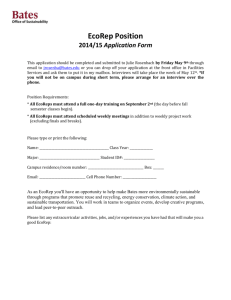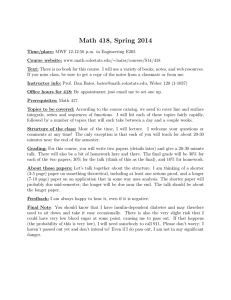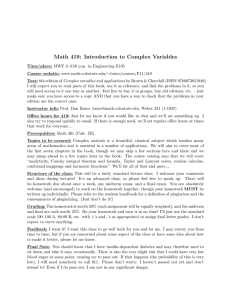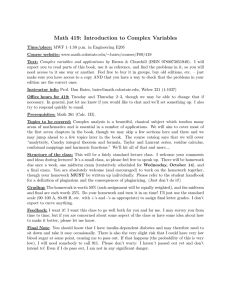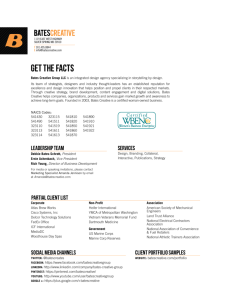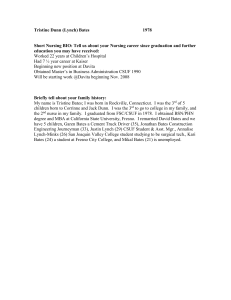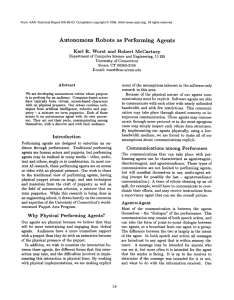Building Emotional C aracters for ... W. Scott Reilly
advertisement
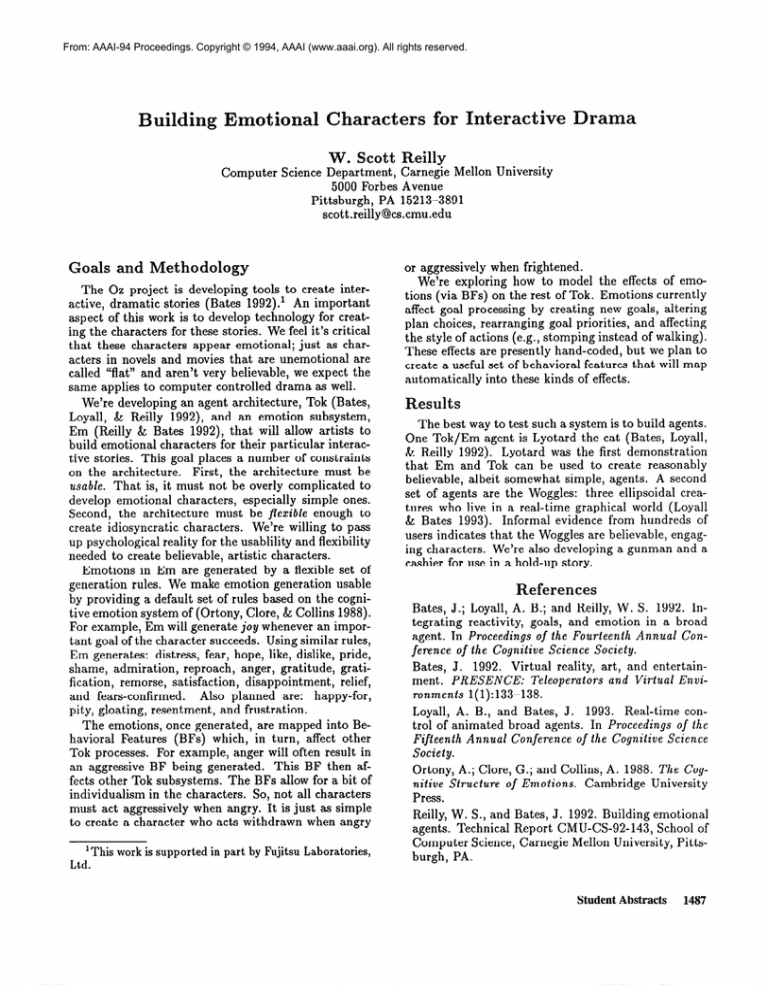
From: AAAI-94 Proceedings. Copyright © 1994, AAAI (www.aaai.org). All rights reserved. Building Emotional C aracters for Interactive Drama W. Computer Scott Reilly Science Department, Carnegie Mellon 5000 Forbes Avenue Pittsburgh, PA 15213-3891 scott.reilly@cs.cmu.edu Goals and Methodology The Oz project is developing tools to create interactive, dramatic stories (Bates 1992).l An important aspect of this work is to develop technology for creating the characters for these stories. We feel it’s critical that these characters appear emotional; just as characters in novels and movies that are unemotional are called “flat” and aren’t very believable, we expect the same applies to computer controlled drama as well. We’re developing an agent architecture, Tok (Bates, Loyall, & Reilly 1992), and an emotion subsystem, Em (Reilly & Bates 1992), that will allow artists to build emotional characters for their particular interactive stories. This goal places a number of constraints on the architecture. First, the architecture must be usable. That is, it must not be overly complicated to develop emotional characters, especially simple ones. Second, the architecture must be fZezible enough to create idiosyncratic characters. We’re willing to pass up psychological reality for the usablility and flexibility needed to create believable, artistic characters. Emotions in Em are generated by a flexible set of generation rules. We make emotion generation usable by providing a default set of rules based on the cognitive emotion system of (Ortony, Clore, & Collins 1988). For example, Em will generate joy whenever an important goal of the character succeeds. Using similar rules, Em generates: distress, fear, hope, like, dislike, pride, shame, admiration, reproach, anger, gratitude, gratification, remorse, satisfaction, disappointment, relief, Also planned are: happy-for, and fears-confirmed. pity, gloating, resentment, and frustration. The emotions, once generated, are mapped into Behavioral Features (BFs) which, in turn, affect other Tok processes. For example, anger will often result in an aggressive BF being generated. This BF then affects other Tok subsystems. The BFs allow for a bit of individualism in the characters. So, not all characters must act aggressively when angry. It is just as simple to create a character who acts withdrawn when angry ‘This work is supp orted in part by Fujitsu Laboratories, Ltd. University or aggressively when frightened. We’re exploring how to model the effects of emotions (via BFs) on the rest of Tok. Emotions currently affect goal processing by creating new goals, altering plan choices, rearranging goal priorities, and affecting the style of actions (e.g., stomping instead of walking). These effects are presently hand-coded, but we plan to create a useful set of behavioral features that will map automatically into these kinds of effects. Results The best way to test such a system is to build agents. One Tok/Em agent is Lyotard the cat (Bates, Loyall, & Reilly 1992). Lyotard was the first demonstration that Em and Tok can be used to create reasonably believable, albeit somewhat simple, agents. A second set of agents are the Woggles: three ellipsoidal creatures who live in a real-time graphical world (Loyal1 & Bates 1993). Informal evidence from hundreds of users indicates that the Woggles are believable, engaging characters. We’re also developing a gunman and a cashier for use in a hold-up story. References Bates, .I.; Loyal& A. B.; and Reilly, W. S. 1992. Integrating reactivity, goals, and emotion in a broad agent. In Proceedings of the Fourteenth Annual Conference of the Cognitive Science Society. Bates, J. 1992. Virtual reality, art, and entertainment. PRESENCE: Teleoperators and Virtual Environments l( 1):133-138. Loyall, A. B., and Bates, J. 1993. Real-time control of animated broad agents. In Proceedings of the Fifteenth Annual Conference of the Cognitive Science Society. Ortony, A.; Clore, G.; and Collins, A. 1988. The Cognitive Structure of Emotions. Cambridge University Press. Reilly, W. S., and Bates, J. 1992. Building emotional agents. Technical Report CMU-CS-92-143, School of Computer Science, Carnegie Mellon University, Pittsburgh, PA. Student Abstracts 1487
